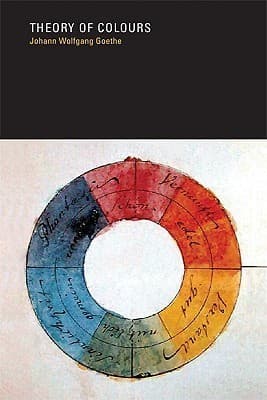
Book Review Summary: Theory of Colours (Mit Press)
Introduction
"Theory of Colours" by Johann Wolfgang von Goethe, published in 1810, offers a unique perspective on the nature of color. Goethe, a renowned German writer and scientist, challenges the prevailing wavelength theory of light and color, arguing that it is an incidental result rather than a fundamental principle. Despite the author's scientific conclusions being discredited, readers today can appreciate the book for its beauty, insight into early nineteenth-century beliefs, and the flavor of life in Europe during a pivotal period.
About Johann Wolfgang von Goethe
Johann Wolfgang von Goethe, a master of poetry, drama, and the novel, was also a prolific scientist. His two-part dramatic poem "Faust" and his scientific research in various fields, including botany, earned him accolades as a polymath. Goethe's influence on German literature and philosophy is immeasurable, and his works continue to inspire music, drama, poetry, and philosophy across Europe. His interest in the literatures of various cultures led him to originate the concept of Weltliteratur.
Analysis of Views
-
Grounded in personal observation: Readers praise Goethe's work for its groundbreaking approach to color theory. Goethe based his conclusions on exhaustive personal observation of color phenomena, rather than relying on scientific theories. This unique perspective allows readers to consider color theory without preconceived notions.
-
Beauty and sweep: Many readers find Goethe's conjectures about the connection between color and philosophical ideas captivating. His writing style is described as beautiful and sweeping, making it enjoyable to read even for those who are not deeply interested in science or philosophy.
-
Insight into early 19th-century beliefs: "Theory of Colours" offers readers an opportunity to gain insight into the beliefs and modes of thought prevalent during the early nineteenth century. Readers appreciate the historical context provided by Goethe's work and find it valuable for understanding the cultural landscape of the time.
-
Practical guide to color phenomena: Despite Goethe's scientific conclusions being discredited, his reporting of color phenomena remains accurate and informative. The book serves as a practical guide to studying color phenomena, leading readers through demonstrations with simple objects such as vessels, prisms, and lenses.
-
Challenging Newton's wavelength theory: Goethe challenges Isaac Newton's wavelength theory of color by proposing that light requires the dark to see and that there is no color without both light and dark. This counter-theory adds depth to readers' understanding of color theory and encourages them to question established beliefs.
Reasons for Recommendation
-
Unique perspective: "Theory of Colours" offers a fresh perspective on color theory that sets it apart from other books on the subject. Readers appreciate the author's groundbreaking approach and find it thought-provoking.
-
Beautiful writing: Goethe's writing style is described as beautiful and captivating, making it an enjoyable read even for those who are not experts in science or philosophy. The book's literary merit adds value to its content.
-
Historical context: The book provides readers with an opportunity to explore early nineteenth-century beliefs and modes of thought. This historical context adds depth to their understanding of the subject matter and offers insights into cultural trends during that period.
Reasons for Not Recommendation
-
Outdated concepts: Some readers note that certain concepts discussed in the book may be outdated or incorrect according to modern scientific understanding. However, these readers still find value in the book for its historical significance and its unique approach to color theory.
-
Lack of hands-on experiments: A few readers express disappointment that the book does not come with a lab kit or provides detailed instructions for conducting experiments mentioned in the text. This limitation may make it difficult for some readers to fully engage with the content and understand the concepts presented.
Conclusion
"Theory of Colours" by Johann Wolfgang von Goethe offers a unique perspective on color theory that challenges established scientific beliefs and provides valuable insights into early nineteenth-century beliefs and modes of thought. While some readers may find certain concepts outdated or lacking in hands-on experiments, they still appreciate the book's beauty, captivating writing style, and historical significance. Overall, "Theory of Colours" is recommended for those interested in exploring color phenomena from a fresh perspective and gaining a deeper understanding of the cultural context in which it was developed.